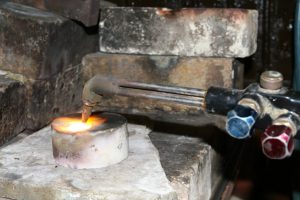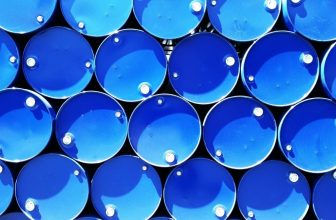
What is lightweight but strong, corrosion and crack-resistant, and costly yet cost-effective?
The most abundant metallic element in the world- ALUMINUM!
Have you ever wondered how everyday materials like aluminum are produced?
How Aluminum is Made:
- Crushing and Grinding: Bauxite is the main raw material we need to make aluminum. The alumina recovery process begins by passing the bauxite through screens to sort it by size. Next, it is crushed into a specific, uniformly sized ore. This ore is then placed into a large grinding mill and mixed with sodium hydroxide at a very high speed and pressure. The result of this process is an ore that is extremely fine, and this very fine ore is known as slurry.
- Digesting: Slurry is pumped into a digester. In this digester, the slurry is heated to 300°F for anywhere from 30 minutes to several hours. More sodium hydroxide is added to further dissolve the compound. Sodium aluminate is the result of the digestion process. Afterward, the material produced is pumped into a series of flash tanks in order to reduce the heat and pressure before it is transferred into the settling tanks.

- Settling: Gravity and a small number of chemicals are all it takes to accomplish the settling process. The slurry will settle just as oil and water mixed together would. A dark, coffee-like substance that gathers at the top of the tank is directed through several filters; this substance is alumina. The leftover muddy, red substance is pumped into a storage pond and eventually dries up and evaporates.
- Filter: To filter the alumina, there are several giant leaves on the filters to remove the remaining solid impurities in the alumina liquor. The material that is caught by the filters is called filter cake. The filtered alumina liquor, now called aluminate solution, is then cooled off and pumped into the precipitators.
- Calcination: Calcination is a heating process used to separate the chemically combined water from the alumina hydrate. Next, the alumina hydrate is filtered to remove more impurities and eliminate moisture. Afterward, the hydrate is placed into a calcining kiln which rotates and is mounted on a tilted foundation allowing the alumina to move forward and onto cooling equipment. We now have pure alumina and are ready to convert it into aluminum using the smelting process.
- Smelting: Smelting is the extraction of metal from its ore by a process involving heating and melting. From this process, most smelters will produce aluminum that is about 99.7% pure, which is substantial for just about every application.













